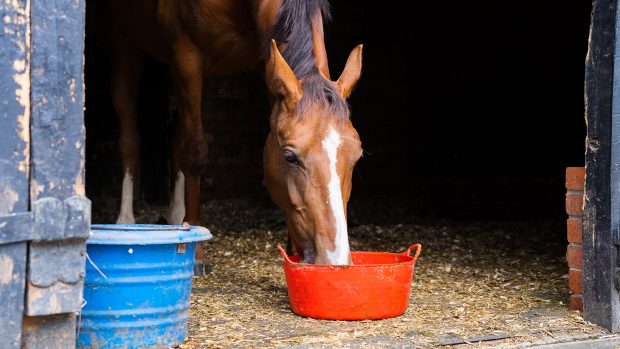Promotional Feature
Leading insurer Petplan Equine has revealed the top five conditions it received claims for in 2016. Arthritis was the number one health problem so here we take a look at what it is, how it affects your horse and how to manage it.
What is equine arthritis?
Osteoarthritis, also known as degenerative joint disease (DJD), is common in horses, humans, dogs and many other animals. It is a slow-developing disease in which the joint tissues become inflamed. This can cause the joint cartilage to become damaged and the wear and tear in the joint causes pain.
Arthritis is very painful and reduces the range of movement in the affected joint. Joint pain and loss of mobility due to arthritis are common causes of poor performance and early retirement in horses. Traumatic injury is considered a common cause of arthritis, which may arise from a single event leading to a joint injury, or it may be the result of repetitive exercise.

Affected joints can be hot and appear swollen
What are the clinical signs?
- Stiffness in the affected limb
- Swelling of affected joints so they appear larger
- Heat in the joints and surrounding areas
- Lameness — of varying degrees
- Reluctance to exercise or change in behaviour when asked to make a transition or when more is asked of the horse
How is arthritis diagnosed?
- Many cases can be diagnosed purely on veterinary examination, using techniques such as trotting up and flexion tests
- This is usually followed up with other, more in-depth diagnostic techniques such as x-ray, ultrasound and MRI scans
How can I help prevent arthritis in my horse?
Osteoarthritis is often caused by constant work, over a number of years, which causes wear and tear. It can be at an advanced stage before it is noticed or diagnosed and occurs most usually in those horses that have had regular hard work.
Tips to reduce the likelihood of arthritis
- Always warm up before exercise prior to intense work. Even if you’re just hacking, ensure your horse has stretched and had time to prepare for more intensive exercise
- Always cool down gradually after working and ensure all parts of the horse have been stretched and prepared for rest
- Try to vary the surfaces you work on without too much time spent in deep surfaces or exercising on hard ground
- Keep a close eye on your horse’s weight: obesity increases pressure on the joints, which in turn increases wear and tear
How can owners ease a horse’s suffering?
There is unfortunately no absolute cure for osteoarthritis, but there are a number of ways of managing the condition, reducing the pain it causes and keeping your horse active for as long as possible.
- Your vet may suggest an oral joint supplement to support the condition or a direct injection into the affected joint, which can often give good results for a long period of time
- Addition oral anti-inflammatory drugs may also be suggested to keep your horse pain-free
- There are other relatively new treatments available which your vet can advise you on which in some cases help greatly
- Often continuing exercise can be beneficial, depending on the degree of damage the joint has sustained. In conjunction with advice from your vet, a light exercise programme tailored to maintain suppleness can be very valuable
- Keeping your horse on the move is helpful to this condition, so turning out as much as possible reduces the likelihood of stiffening up
Petplan Equine paid out over £631,000 in claims for arthritis in 2016. For more advice on Petplan Equine’s top five conditions visit the website.
Petplan Equine’s top five most commonly occurring claims in 2016 were:
1) Arthritis
2) Colic
4) Laminitis
5) Desmitis (inflamed ligaments)
Horse insurance can help cover the costs of unexpected veterinary care, so make sure any horses in your care are covered.




